We’ve all been there.
We create an AI generated text to help us write faster, but then, comes the frustration that our content is being continually flagged or detected by AI, rendering our efforts moot.
If this sounds too familiar, take a sigh of relief.
You’ve just stumbled upon an article made specifically to help you with that.
Here, we’ll show you step by step how to bypass AI Content Detection in a foolproof way
Let’s dive in.
What Is AI-Created Content?
AI-created content is text generated by artificial intelligence models. These are programs trained on massive amounts of human writing that learn patterns, structures, and styles from millions of articles, books, and websites.
When you ask ChatGPT to write a blog post about pizza, it’s not actually thinking about pizza.
It’s learning, predicting, doing, making, and understanding what words should come next based on all the pizza-related content it’s seen before.
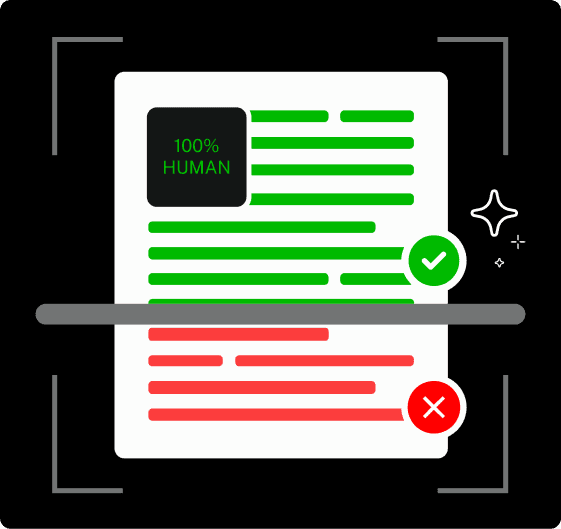
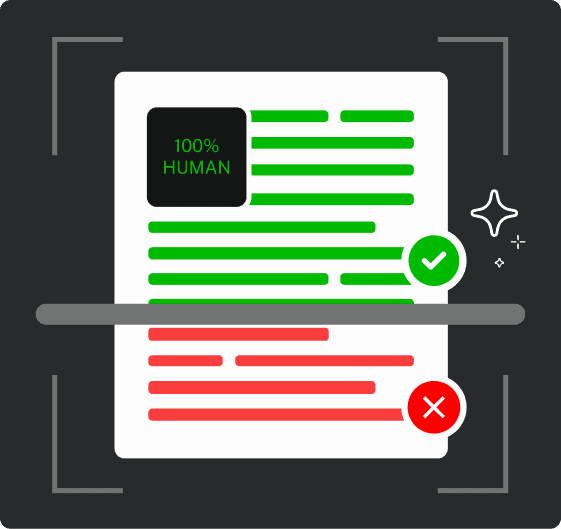
Never Worry About AI Detecting Your Texts Again. Undetectable AI Can Help You:
- Make your AI assisted writing appear human-like.
- Bypass all major AI detection tools with just one click.
- Use AI safely and confidently in school and work.
The result? Content that’s grammatically correct and factually accurate but that often lacks the human spark that makes writing memorable.
Think of it like this: AI writes like someone who’s read every manual on “proper writing” but has never had a real conversation. Technically perfect but emotionally flat.
What Are AI Detection Tools?
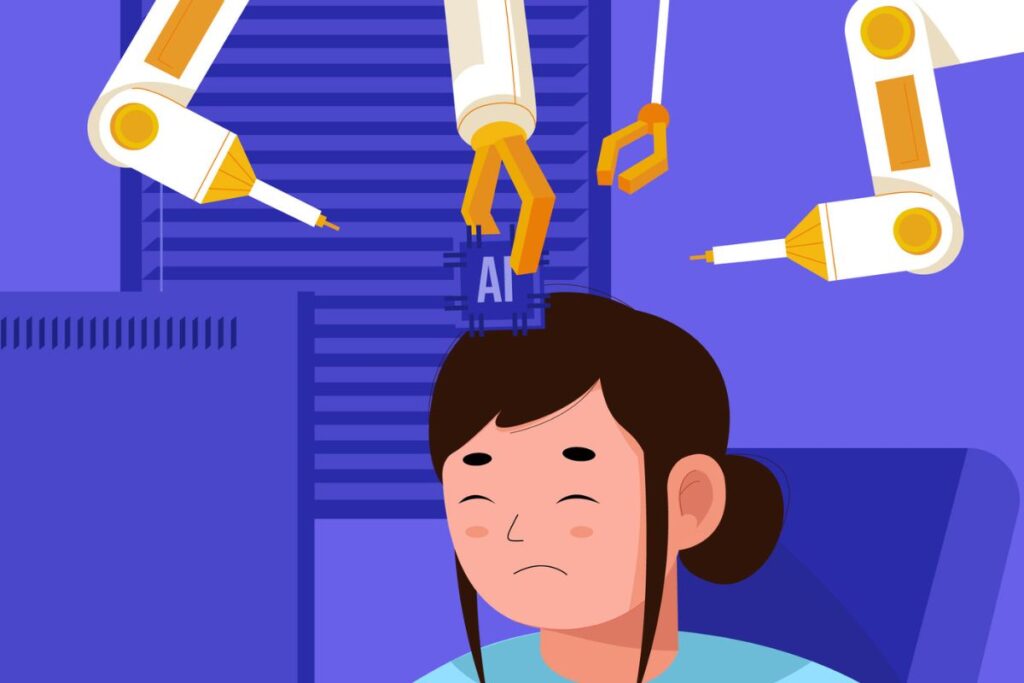
AI detection tools are software programs designed to identify content created by artificial intelligence. They analyze text for patterns, word choices, and structural elements that are common in AI-generated writing.
These tools have become popular as AI writing has exploded. Teachers use them to check student work. Employers use them to verify content authenticity. Publishers use them to maintain editorial standards.
Popular AI detection tools include Undetectable AI’s AI Detector, Originality.ai, GPTZero, and Copyleaks. Each uses different methods to spot AI-generated text.
But here’s the reality check. These tools aren’t perfect. They make mistakes. They flag human writing as AI-generated. They miss obvious AI content.
That’s because the technology is still evolving.
1. How Do AI Detectors Work?
AI detectors work by identifying patterns that are characteristic of AI-generated content.
Content written by AI tools may have specific identifiers that wouldn’t usually be exhibited in human-generated content.
They look for things like:
- Perplexity scores. This measures how predictable your word choices are. AI tends to choose the most statistically likely next word. Humans are more unpredictable and creative.
- Sentence uniformity. AI often creates sentences that are similar in length and structure. Real human writing varies more dramatically.
- Vocabulary patterns. AI has favorite words and phrases it uses repeatedly. It might overuse transition words or stick to safe, common vocabulary.
- Emotional markers. AI struggles with genuine emotion and personal voice. It might use emotional words, but in ways that feel inauthentic.
These tools basically ask: “Does this text behave like a human wrote it, or like a machine predicted it?”
2. Types of AI Content Detection
There are various methods employed to detect AI-created content:
- Text Analysis: Scrutinizes the sentence structure, vocabulary use, and other textual patterns.
- Metadata Analysis: Examines data attached to content, like timestamps or digital signatures.
- Image Recognition: Evaluates visual content for signs of AI generation, such as patterns in pixels or unusual rendering.
- Audio Analysis: Detects inconsistencies in voice-generated content.
Understanding these methods can help creators learn not only how to outsmart AI content detection but to also do so in an ethical way that accurately solves the problems of the audiences they’re targeting.
3. Limitations of AI Content Detectors
While AI detectors are sophisticated, they’re not infallible.
- False positives are common. These tools regularly flag human-written content as AI-generated. Especially if you write in a clear, structured way.
- They can’t detect heavily edited AI content. If someone takes AI text and rewrites it substantially, detection becomes nearly impossible.
- Different tools give different results. The same piece of content might score 90% AI on one tool and 20% on another.
- They struggle with mixed content. If you use AI for research but write the actual content yourself, detectors get confused.
- Short content is harder to analyze. These tools work better on longer pieces. A 100-word paragraph is much harder to classify than a 1000-word article.
The bottom line? Don’t panic if an AI detector flags your human-written content.
And don’t assume AI content is undetectable just because it passes one tool.
Importance of Bypassing AI Content Detection
In an era where AI-driven content moderation is omnipresent, content creators, marketers, and even everyday users may seek to learn more about integrating AI content creation into their own digital marketing strategies.
This, in turn, naturally detours into solving the issue of AI content detection.
Why is it important to worry about bypassing AI content detection in the first place?
In the world of digital marketing, removing AI detection from text can be essential to ensure genuine and ethical content isn’t mistakenly blocked, negatively impacting business outcomes as a result.
Additionally, for researchers and developers, understanding these detection mechanisms can pave the way to creating more refined AI tools in the future.
However, it’s vital to emphasize that bypassing AI detection should always be pursued with ethical intentions.
In a world inundated with information, it’s essential that bypassing AI detection doesn’t contribute to the spread of misinformation or harmful content.
Manual Techniques to Bypass AI Content Detection

In the March 2025 Core Update, Google intensified its focus on content quality, penalizing thin, low-value, or AI-generated material lacking originality and depth.
The new focus shows just how important it is to produce authentic, user-centric content that demonstrates expertise and trustworthiness.
While sophisticated AI content detectors continue to evolve, several manual methods exist that can help creators avoid AI content detection.
Here are three of those techniques.
1. Change Grammar and Spelling
By intentionally altering the grammar and spelling of your content, you can trick AI detectors calibrated to identify specific patterns typical of AI-created content.
Pros: It’s a quick and straightforward method, it doesn’t require any additional tools or software, and it can effectively mislead basic AI detectors.
Cons: You might end up making your content less readable or professional, advanced AI systems may still be able to detect your content, and overuse of this method might make your content seem spammy or untrustworthy.
2. Include Personal Anecdotes
Including personal stories or anecdotes in your content can make it seem more human.
AI tools typically generate content based on patterns and might not include unique, personal stories.
Pros: This makes content more relatable and authentic, enhances reader engagement, and makes it more difficult for AI detectors to flag such content as AI-generated.
Cons: It requires the content creator to divulge personal experiences that they might not always be comfortable with; it could divert from the primary message if not relevant to the topic, and overuse could make the content seem forced or unstructured.
3. Use a Human Editor
Having a human editor review and make edits to AI-generated content can add the unpredictability and nuance of human thinking, making it harder for AI detectors to identify the content’s origin.
Pros: This enhances the overall quality and readability of the content, it introduces human touch and unpredictability, and can usually fix any glaring errors or “tells” of AI generation.
Cons: It can be time-consuming, it might incur additional costs if you’re hiring a professional editor, and the editor might slightly alter the original focus and message of your content.
Incorporating these manual techniques while adhering to ethical guidelines can help ensure that your content remains undetected by AI systems while retaining its authenticity and impact.
The Foolproof Method to Avoid AI Detection
Manual editing works, but it’s time-consuming. If you’re dealing with tons of AI content, you need a more efficient solution.
AI humanization tools are specifically designed to transform AI-generated text into more natural, human-sounding content.
These tools analyze your text and rewrite it to eliminate common AI patterns.
Undetectable AI is one of the leading tools in this space. It combines an AI humanizer with a detection system, so you can see how your content performs before publishing.
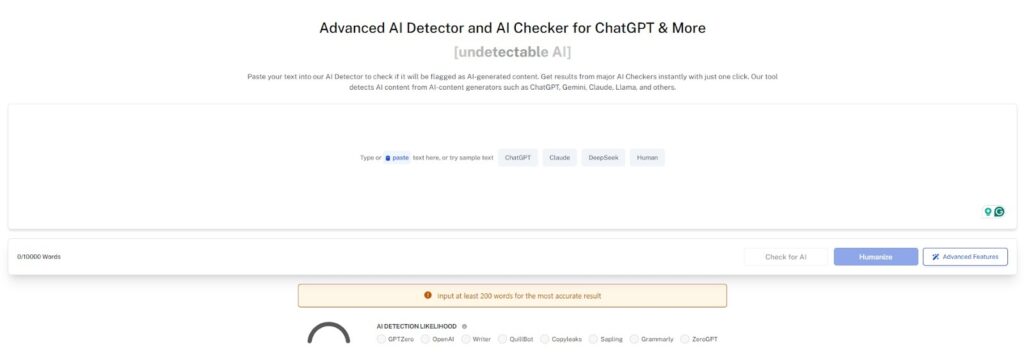
Here’s how it works:
- Paste your AI-generated content into the tool
- Run the humanization process to rewrite problematic sections
- Test the result with their built-in AI detector
- Repeat if necessary until you get the desired result
The tool specifically targets the patterns that AI detectors look for.
It varies sentence structure, improves word choice, and adds the kind of natural variation that human writing contains.
Other similar tools exist. Each has its own approach, but they all aim to make AI content sound more natural and authentic.
If you want to take your workflow a step further, try our Undetectable AI’s Human Auto Typer. It types your fully humanized text naturally in real time, just like a person would.
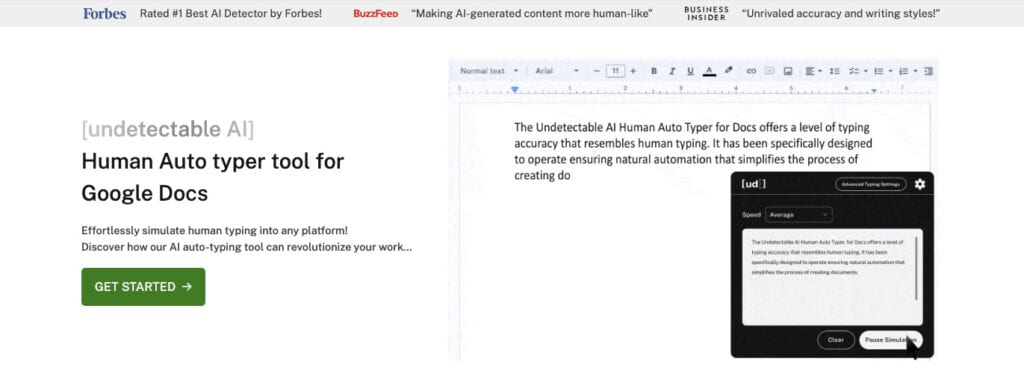
This not only helps your content appear more authentic but also avoids formatting issues that can occur when you paste text into CMS fields or submission portals.
The Human Auto Typer is especially useful for freelancers, students, and marketers uploading AI-assisted work.
It reproduces the content keystroke by keystroke, keeping your output consistent, natural, and indistinguishable from original human writing.
Additional Tips and Tricks to Bypass Detection
Want to go beyond the basics?
Here are some advanced techniques:
- Study your favorite writers. Notice how they structure sentences, use vocabulary, and express ideas. Incorporate those patterns into your own work.
- Read your content out loud. How does it sound when read quickly? When read carefully? Does it sound natural and human-written? If not, adjust accordingly.
- Use transition words sparingly. AI loves “however,” “furthermore,” and “additionally.” Use them less frequently than you think you should.
- Reference current events or trends. AI training data has cutoff dates. Mentioning recent developments and facts adds authenticity.
- Use specific numbers and dates. Instead of “recently” or “many,” give exact figures when possible.
Challenges of Bypassing AI Content Detection
As technology progresses, the game of cat-and-mouse between content creators and AI detection tools intensifies.
While manual techniques can currently bypass some AI detectors, these systems will continuously learn and adapt.
In the near future, we can anticipate AI detection tools that not only recognize patterns but also predict and identify bypass techniques.
With advancements in deep learning, neural networks, and real-time data analysis, AI detection will become more instantaneous and accurate.
As the market demands more refined AI tools, developers will rise to the challenge, making the act of bypassing detection increasingly complex.
Content creators must be prepared to adapt, innovate, and maintain ethical standards in this ever-evolving landscape.
Want to see our AI Detector and Humanizer in action? Check them out in the widget below!
FAQs
How to trick AI content detectors?
Focus on natural variation. Mix sentence lengths, use casual language, add personal touches, and include specific examples.
The goal is to write like a human, not like a perfect writing robot.
Tools like Undetectable AI can help you refine your text and make it harder for AI detectors to catch.
How to bypass AI content not detected?
Edit ruthlessly. Add your voice, include personal anecdotes, vary sentence structure, and remove redundant phrases. Use AI as a starting point, not a final product.
Platforms like Undetectable AI are designed to help refine AI-generated content so it’s more humanlike and less likely to be flagged.
When should you avoid using AI content?
Avoid AI for personal stories, original research, expert opinions, or content requiring deep expertise.
Also, skip AI usage in academic work, journalism, or any context where authenticity is paramount.
Undetectable AI recommends using human-written content when the stakes are high.
Outsmart Detection with Authenticity
Bypassing AI content detection is never about cheating the system.
It’s about making your content feel genuine, human, and engaging.
Use tools like Undetectable AI to refine your drafts, but don’t stop there. Edit, add your voice, and sprinkle in your unique perspective to craft something that feels real.
The goal is to create content that truly resonates with your readers.
AI is a powerful tool for drafting and research, but human creativity is what brings a piece to life.
Use both wisely, and you’ll produce content that’s not only foolproof for detectors but also enjoyable, authentic, and valuable.
Click here to access the tool, and let your content truly resonate.
